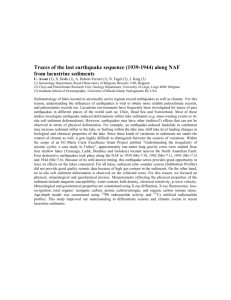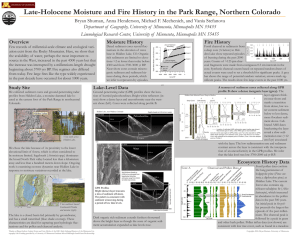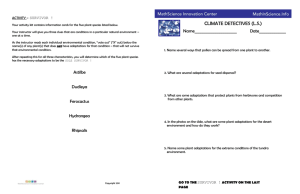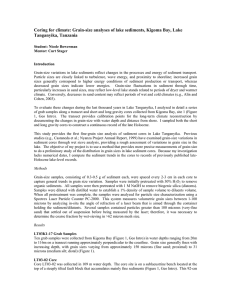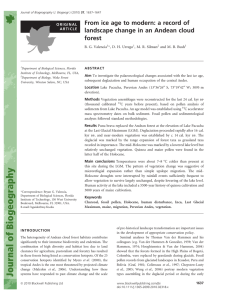Lake Core and Pollen Background
advertisement
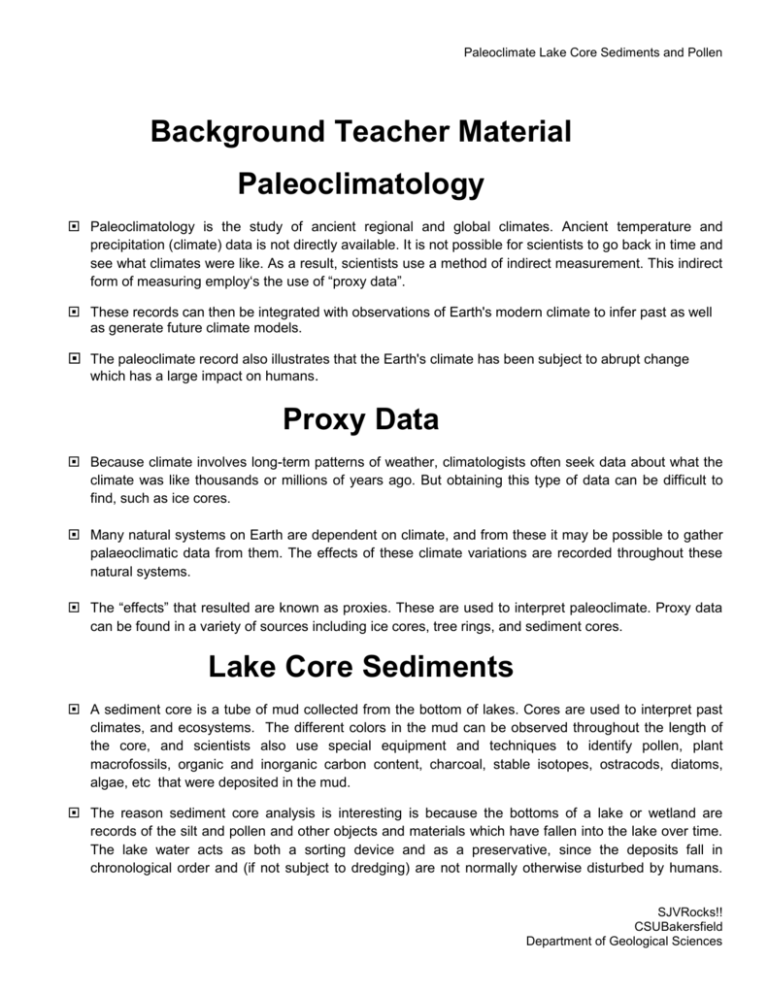
Paleoclimate Lake Core Sediments and Pollen Background Teacher Material Paleoclimatology Paleoclimatology is the study of ancient regional and global climates. Ancient temperature and precipitation (climate) data is not directly available. It is not possible for scientists to go back in time and see what climates were like. As a result, scientists use a method of indirect measurement. This indirect form of measuring employ‘s the use of “proxy data”. These records can then be integrated with observations of Earth's modern climate to infer past as well as generate future climate models. The paleoclimate record also illustrates that the Earth's climate has been subject to abrupt change which has a large impact on humans. Proxy Data Because climate involves long-term patterns of weather, climatologists often seek data about what the climate was like thousands or millions of years ago. But obtaining this type of data can be difficult to find, such as ice cores. Many natural systems on Earth are dependent on climate, and from these it may be possible to gather palaeoclimatic data from them. The effects of these climate variations are recorded throughout these natural systems. The “effects” that resulted are known as proxies. These are used to interpret paleoclimate. Proxy data can be found in a variety of sources including ice cores, tree rings, and sediment cores. Lake Core Sediments A sediment core is a tube of mud collected from the bottom of lakes. Cores are used to interpret past climates, and ecosystems. The different colors in the mud can be observed throughout the length of the core, and scientists also use special equipment and techniques to identify pollen, plant macrofossils, organic and inorganic carbon content, charcoal, stable isotopes, ostracods, diatoms, algae, etc that were deposited in the mud. The reason sediment core analysis is interesting is because the bottoms of a lake or wetland are records of the silt and pollen and other objects and materials which have fallen into the lake over time. The lake water acts as both a sorting device and as a preservative, since the deposits fall in chronological order and (if not subject to dredging) are not normally otherwise disturbed by humans. SJVRocks!! CSUBakersfield Department of Geological Sciences Paleoclimate Lake Core Sediments and Pollen So, a tube extended down into these sediments collects a sample of 2-5 inch diameter of undisturbed deposits which reflect changes over time. Physical properties that are found within these cores are useful for reconstructing ancient climates. For example, environments associated with deeper lakes suggest a higher precipitation to evaporation rate than environments associated with shallower lakes. This would be evident with thicker sediment and the opposite would be true for higher rates of evaporation than precipitation in a thinner layer. The depth of the core can tell you how old it is. Rates of deposition vary greatly within a single core. For example, if the rate of deposition is 1 cm every 5 years and a section of the core is 50 cm, than the age at the bottom of the section can be determined by multiplying the depth by the rate of deposition. In this case the age would be 250 years. Pollen Pollen grains are composed of a type of natural “plastic,” they are often well preserved within each sediment layer collected from the bottom of ponds, lakes, oceans, or any stratified deposit. By analyzing the pollen types contained within each sediment layer, scientists can infer specific environmental conditions. SJVRocks!! CSUBakersfield Department of Geological Sciences
